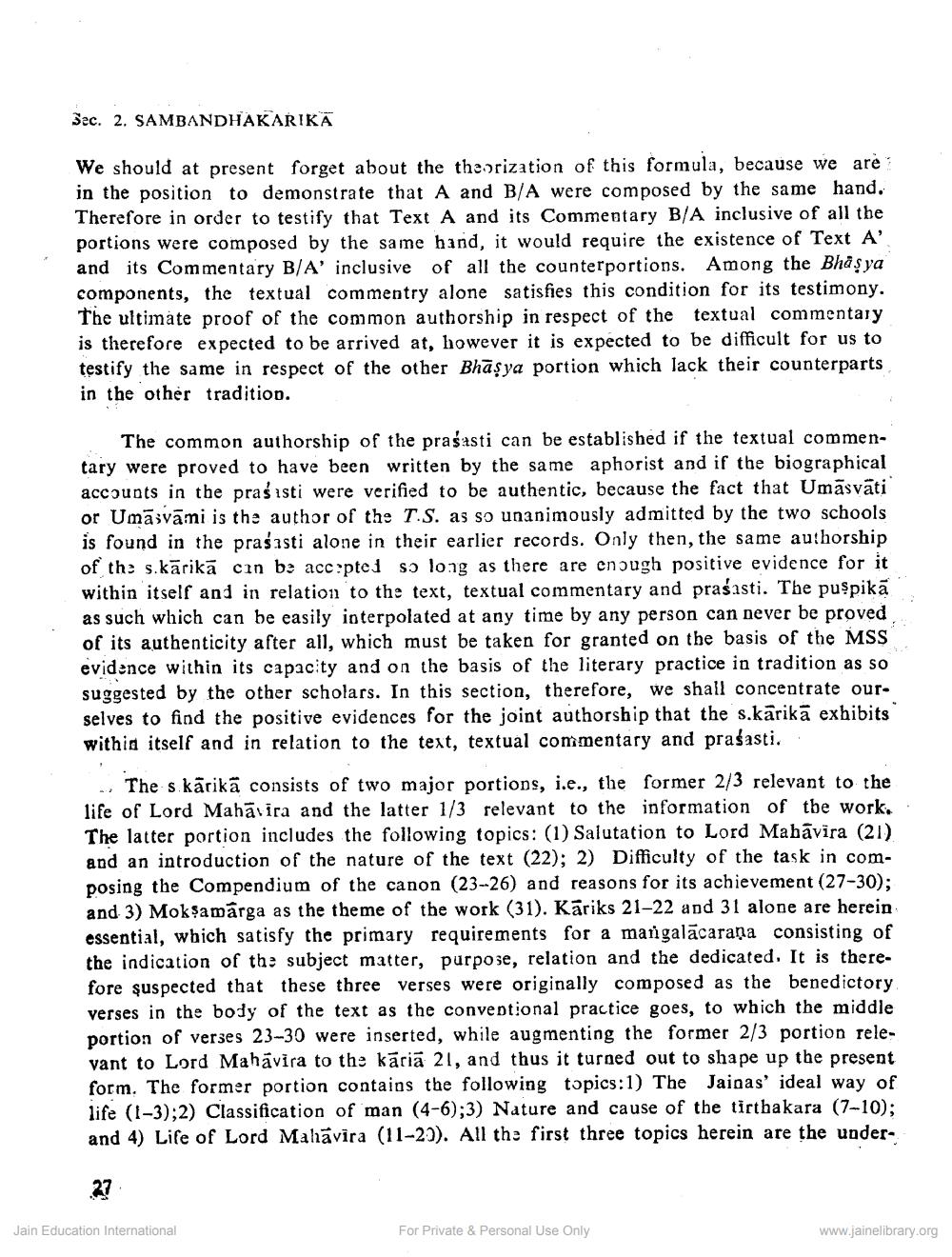________________
Sec. 2. SAMBANDHAKARIKA
We should at present forget about the theorization of this formula, because we are in the position to demonstrate that A and B/A were composed by the same hand. Therefore in order to testify that Text A and its Commentary B/A inclusive of all the portions were composed by the same hand, it would require the existence of Text A' and its Commentary B/A' inclusive of all the counterportions. Among the Bhasya components, the textual commentry alone satisfies this condition for its testimony. The ultimate proof of the common authorship in respect of the textual commentary is therefore expected to be arrived at, however it is expected to be difficult for us to testify the same in respect of the other Bhāşya portion which lack their counterparts in the other tradition.
The common authorship of the prasasti can be established if the textual commentary were proved to have been written by the same aphorist and if the biographical accounts in the prasasti were verified to be authentic, because the fact that Umāsvāti or Umājvāmi is the author of the T.S. as so unanimously admitted by the two schools is found in the prasasti alone in their earlier records. Only then, the same authorship of the s.kārikā cin ba acepte i so long as there are enough positive evidence for it within itself and in relation to the text, textual commentary and praśasti. The puspikā as such which can be easily interpolated at any time by any person can never be proved of its authenticity after all, which must be taken for granted on the basis of the MSS evidence within its capacity and on the basis of the literary practice in tradition as so suggested by the other scholars. In this section, therefore, we shall concentrate our. selves to find the positive evidences for the joint authorship that the s.kārikā exhibits within itself and in relation to the text, textual commentary and prasasti.
- The s kātikā consists of two major portions, i.e., the former 2/3 relevant to the life of Lord Mahāvira and the latter 1/3 relevant to the information of the work. The latter portion includes the following topics: (1) Salutation to Lord Mahavira (21) and an introduction of the nature of the text (22); 2) Difficulty of the task in composing the Compendium of the canon (23-26) and reasons for its achievement (27-30); and 3) Moksamärga as the theme of the work (31). Kāriks 21-22 and 31 alone are herein essential, which satisfy the primary requirements for a mangalācarana consisting of the indication of the subject matter, purpose, relation and the dedicated. It is therefore suspected that these three verses were originally composed as the benedictory verses in the body of the text as the conventional practice goes, to which the middle portion of verses 23-30 were inserted, while augmenting the former 2/3 portion relevant to Lord Mahāvira to the kāciā 21, and thus it turned out to shape up the present form. The former portion contains the following topics:1) The Jainas' ideal way of life (1-3);2) Classification of man (4-6);3) Nature and cause of the tirthakara (7-10); and 4) Life of Lord Mahavira (11-20). All the first three topics herein are the under
27
Jain Education International
For Private & Personal Use Only
www.jainelibrary.org




